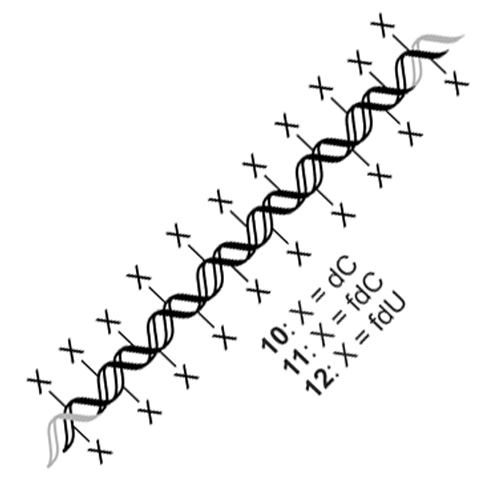Comparative Nucleosomal Reactivity of 5-Formyl-Uridine and 5-Formyl-Cytidine
2021-06-21
Dr. Leander Simon Runtsch, Dr. Michael Stadlmeier, Alexander Schön, Dr. Markus Müller, Prof. Dr. Thomas Carell
5-Formyl-deoxyuridine (fdU) and 5-formyl-deoxycytidine (fdC) are formyl-containing nucleosides that are created by oxidative stress in differentiated cells. While fdU is almost exclusively an oxidative stress lesion formed from deoxythymidine (T), the situation for fdC is more complex. Next to formation as an oxidative lesion, it is particularly abundant in stem cells, where it is more frequently formed in an epigenetically important oxidation reaction performed by α-ketoglutarate dependent TET enzymes from 5-methyl-deoxycytidine (mdC). Recently, it was shown that genomic fdC and fdU can react with the ϵ-aminogroups of nucleosomal lysines to give Schiff base adducts that covalently link nucleosomes to genomic DNA. Here, we show that fdU features a significantly higher reactivity towards lysine side chains compared with fdC. This result shows that depending on the amounts of fdC and fdU, oxidative stress may have a bigger impact on nucleosome binding than epigenetics.








